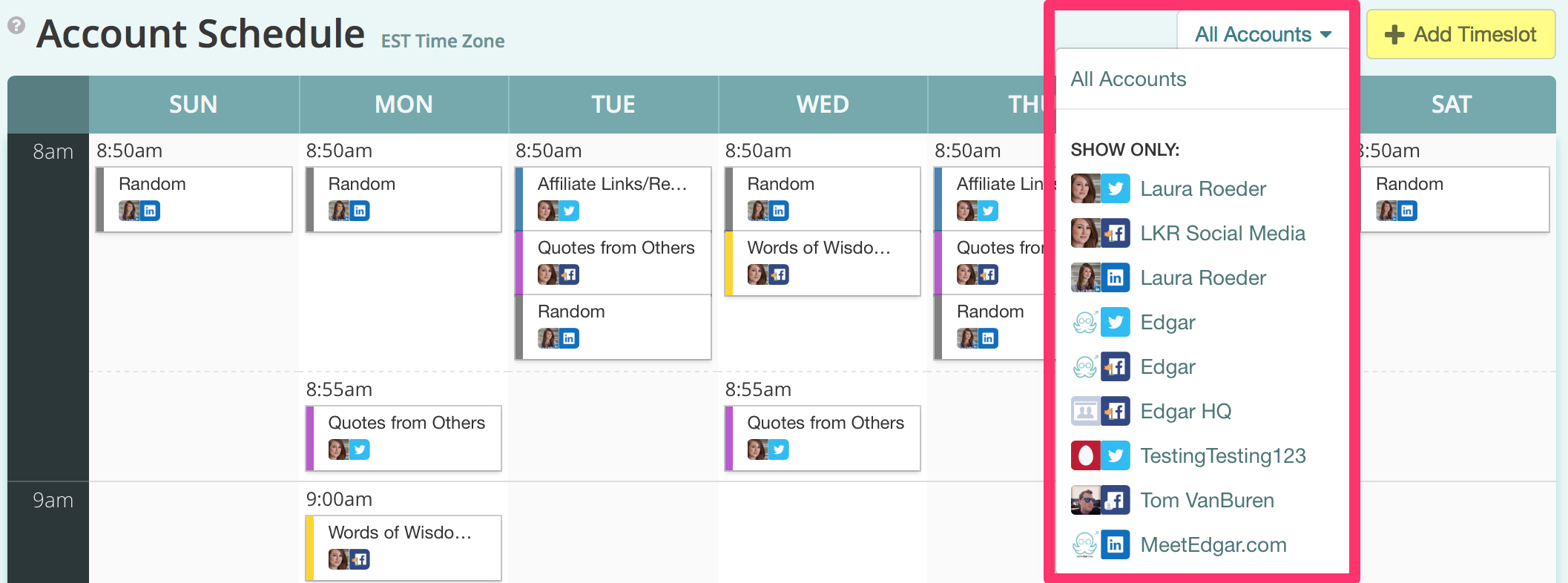How to Develop a Social Media Marketing Calendar
In all matters of life, to be as productive as possible and create a positive experience, you need a plan. After all, you wouldn’t write a book without an outline, or leave on a trip without having some idea of what you’ll do when you arrive. In social marketing, creating a plan often begins and ends in the form of a social media marketing calendar.
A social media calendar is a framework for your coming content that outlines what you have planned for each month.
Designed to help you keep a steady stream of content flowing and move you toward your marketing goals, a social media calendar is a framework for your content that outlines what you have planned for each month. A meticulous social media calendar will tell you a range of important information at a glance — how often you’re going to share content on each social channel in the coming weeks, when you intend to post, and what type of content. It’s an organizational tool that frees you up to focus on the task of actually creating it — and isn’t that the most important part?
Plenty of businesses post content on the fly, without any sort of plan or strategy, but the odds are low that this approach will generate lasting results. And if you succumb to repetition or suffer a string of subpar posts, it could have a negative effect on your brand. It will take a little time to develop your calendar the first time around, but once you’ve got a template you can easily input your content moving forward. To get started, follow these three steps.
Define your audience
Social media marketing can expand a small business’s exposure far beyond its existing customer base, but before you launch into a content plan, you have to know who it is that you’re trying to reach.
Some characteristics of your target client will be self-evident; if you own a dog grooming business, for example, you’re looking for local pet owners. You may know from your foot traffic and customer base that these consumers tend to be women in their mid-30s to 60s, and that many are working professionals.
With this intelligence as your foundation, you can use tools like Facebook’s Audience Insights to create a more robust buyer persona. Plug in what you know about your ideal customer with filters like gender, age, and location, and Facebook will show you what else those consumers are interested in based on what they’ve divulged on their Facebook profile page, along with their purchasing habits. This information can be used to determine what kind of imagery and messaging you should include in your social media posts, as well as to shape future promotions.
Determine frequency
This aspect of your calendar can be a little intimidating, because it lays bare just how much of a commitment successful social marketing requires. To do it right, you’ll need to be consistent with your posts and upload your content to each platform at the moment when it’s apt to perform best, based on network activity and user engagement.Last year, Social Media Week published a roundup of data points outlining the ideal day, time, and frequency for publishing on each major social media platform:
Facebook. Post daily in the mid-afternoon. Thursdays and Fridays will deliver the highest levels of engagement.
Twitter. Tweet three to five times daily if you can; for business-to-business content, Wednesdays and weekends are best.
Instagram. Post daily between 3–4 p.m.
Pinterest. Post at least five pins per day. Saturdays typically see the most user activity, along with weekdays at 9 p.m.
Looking at more niche platforms, LinkedIn has reportedly said that posting 20 times per month can yield a 60 percent audience reach, and social media analytics company Kissmetrics maintains that posting to Google+ every day is a must.
You can use a digital social media calendar tool like those offered by social marketing companies Sprout Social and Buffer to sketch out which platform you plan to publish to, and when. Remember that many of your planned social media posts should appear across multiple platforms if you think it will appeal to your followers on those sites.
 Plan your content
Plan your content
This is where your creativity comes into play. Think about the kind of content that’s likely to resonate with your target audience, and the material — photos, videos, interviews, and so on — that you’re working with. Possible topics or themes might include upcoming events like new product launches and store openings; product news like the arrival of popular seasonal stock; company news like your business’s anniversary or an award the company recently received; positive publicity like a profile in the local paper; and new hires or staff promotions.
Assess how this information might translate as a Facebook, Instagram, Twitter, LinkedIn, or Pinterest post. Review the types of content that are available to you, from cross-promotion to user-generated media (more on those here: link to 5 content types story). Consider also the time of year as holidays, the local weather, and cultural events like the Super Bowl and the Academy Awards could be a perfect opportunity to share content related to your gift shop, weed-control service, or party planning expertise.
If you’re using Shutterstock Editor, you can select the photos you need to represent your services and preset the size based on the social site you’ll be posting to, so your content is sure to be a good fit. To execute your social media content strategy, try a scheduling tool like Edgar or AgoraPulse, both of which will automate your publishing schedule to make sure your posts go live, or test out Hootsuite and Google Analytics, which also help you analyze and optimize your results.
 In the end, your social media marketing calendar should provide a panoramic view of your social content that you can easily reference and enhance. It’s an effective and helpful tool that makes up the cornerstone of a good social-media marketing campaign.
In the end, your social media marketing calendar should provide a panoramic view of your social content that you can easily reference and enhance. It’s an effective and helpful tool that makes up the cornerstone of a good social-media marketing campaign.



